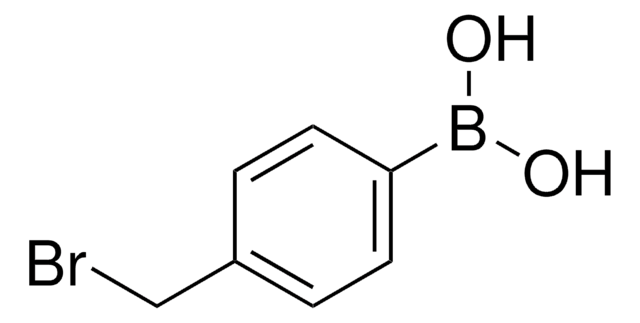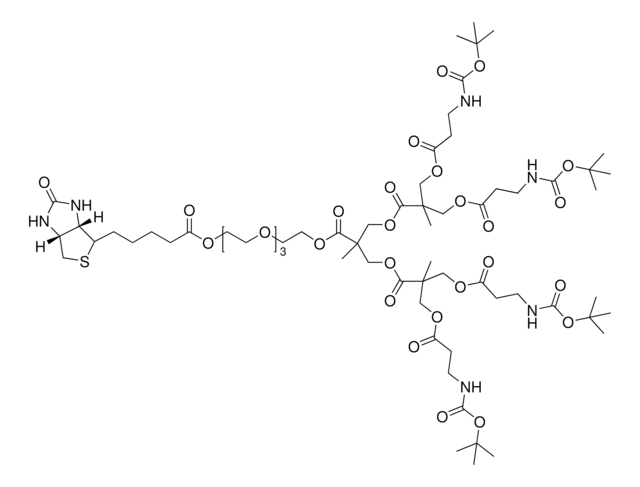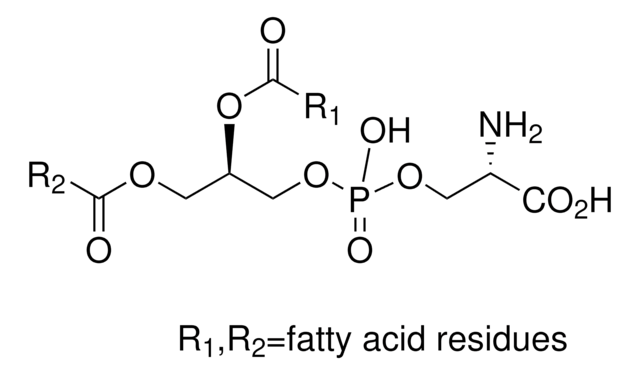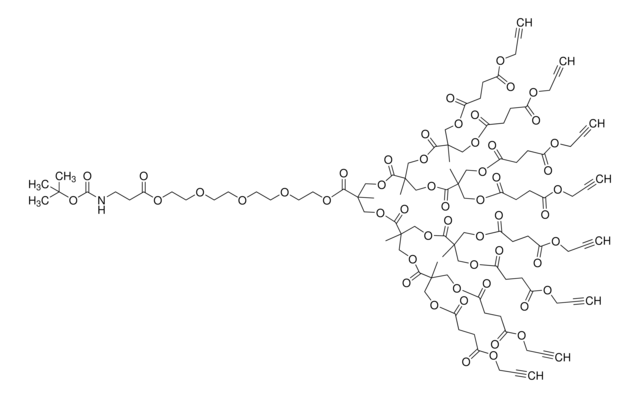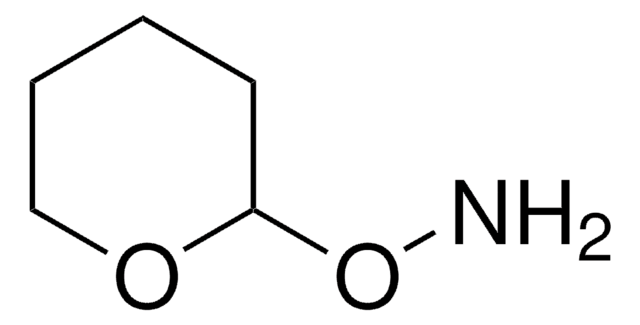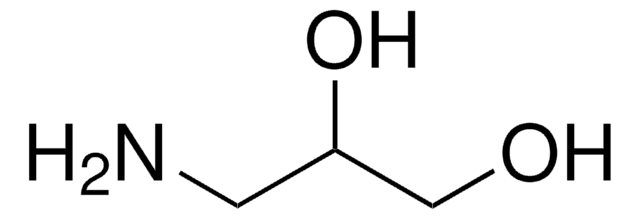840030C
Avanti
06:0 PS
1,2-dihexanoyl-sn-glycero-3-phospho-L-serine (sodium salt), chloroform
Synonym(s):
PS(6:0/6:0)
About This Item
Recommended Products
assay
>99% (TLC)
form
liquid
packaging
pkg of 1 × 1 mL (840030C-10mg)
pkg of 1 × 2.5 mL (840030C-25mg)
manufacturer/tradename
Avanti Research™ - A Croda Brand 840030C
concentration
10 mg/mL (840030C-10mg)
10 mg/mL (840030C-25mg)
lipid type
phospholipids
cardiolipins
shipped in
dry ice
storage temp.
−20°C
SMILES string
[H][C@@](COP([O-])(OC[C@](C([O-])=O)([H])[NH3+])=O)(OC(CCCCC)=O)COC(CCCCC)=O.[Na+]
InChI
1S/C18H34NO10P.Na/c1-3-5-7-9-16(20)26-11-14(29-17(21)10-8-6-4-2)12-27-30(24,25)28-13-15(19)18(22)23;/h14-15H,3-13,19H2,1-2H3,(H,22,23)(H,24,25);/q;+1/p-1/t14-,15+;/m1./s1
InChI key
OPDYVXCKOQKYDZ-LIOBNPLQSA-M
General description
Application
- to study its effect on α-syn (α-synuclein) oligomerization by DA (dopamine)
- to prepare phosphatidylserine (PS) liposomes
- as a phospholipid substrate to determine the kinetic parameters for phospholipase C by chromogenic assay
Biochem/physiol Actions
Packaging
Legal Information
signalword
Danger
Hazard Classifications
Acute Tox. 3 Inhalation - Acute Tox. 4 Oral - Carc. 2 - Eye Irrit. 2 - Repr. 2 - Skin Irrit. 2 - STOT RE 1 - STOT SE 3
target_organs
Central nervous system
wgk_germany
WGK 3
Certificates of Analysis (COA)
Search for Certificates of Analysis (COA) by entering the products Lot/Batch Number. Lot and Batch Numbers can be found on a product’s label following the words ‘Lot’ or ‘Batch’.
Already Own This Product?
Find documentation for the products that you have recently purchased in the Document Library.
Articles
The critical micelle concentration (CMC) can be approximately defined as the lipid monomer concentration at which appreciable amounts (>5% of total) of micellar aggregates first begin to appear in the equilibrium: nM1<=>Mn
Our team of scientists has experience in all areas of research including Life Science, Material Science, Chemical Synthesis, Chromatography, Analytical and many others.
Contact Technical Service
